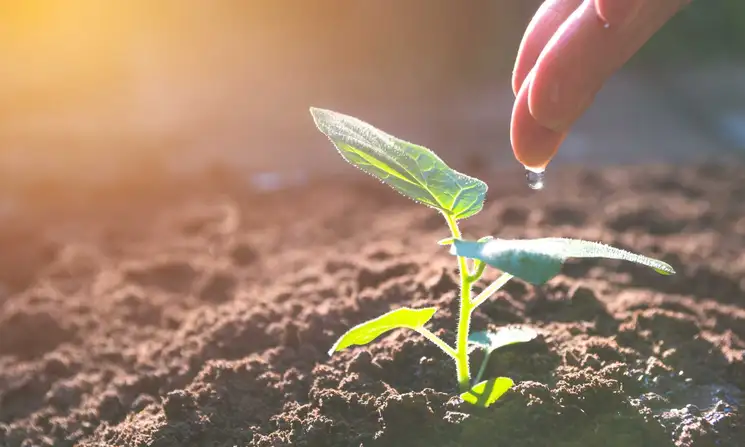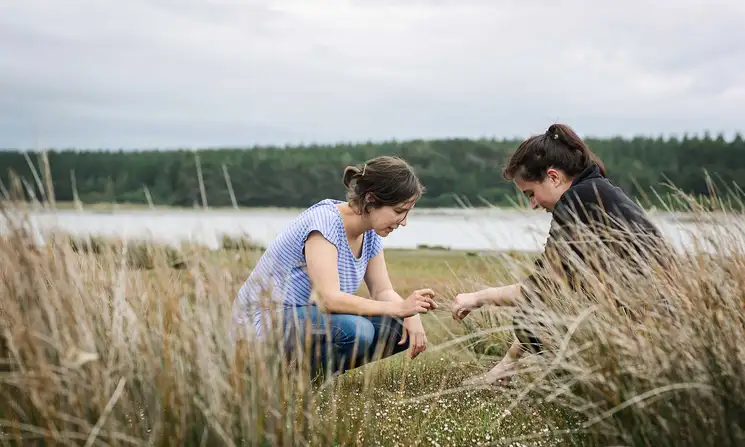Humans have a variety of impacts on marine mammals and, conversely, the wellbeing of these species can also tell us about the state of our environment, and risks to our health. Professor Karen Stockin from the School of Natural Sciences explores marine mammal biology and, in particular, human impacts on these species. ‘By training, I’m a marine biologist who specialised in behaviour. However, my current research intersects environmental toxicology, animal physiology and veterinary pathology. By working across these fields, I am able to better understand how human impacts affect marine mammal species and populations,’ she says.
We have this legacy that is still living in the marine environment

Professor Karen Stockin, School of Natural Sciences
A major area of research involves investigating environmental contaminants in killer whales, common dolphins and other species, and what that means for marine mammal health and conservation. One important group of environmental contaminants is PFAS (poly-fluoroalkyl substances), a large group of more than 3000 compounds that are used in a wide variety of industrial and consumer applications. Also known as 'forever chemicals', because they do not break down in the environment, these substances are causing increasing concern for human biology and physiology, as well as mammalian and broader wildlife. ‘We don’t manufacture PFAS in New Zealand but we import items containing them, such as clothes, carpets, curtains, and even frying pans,’ says Professor Stockin. ‘We know these substances are detrimental to humans as well as the environment and animals.’
PFAS are widely recognised as an emerging issue in the US and Australia but are less publicly known here. In 2017, however, the New Zealand government launched an all-government response to PFAS after the substances were found in large amounts at naval bases and airports, where PFAS-containing aqueous firefighting foams had been used. Initial environmental tests involved looking at PFAS levels in shrimps and some fish. Amounts in these species were found to be low, but further testing was necessary in mammals, which are higher up the food chain.
Since Professor Stockin archives marine mammal tissues as part of her work, she was approached to take part in testing for PFAS in these species. ‘That was when the floodgates opened,’ she says, ‘because the levels in some of these animals were considerably higher than anticipated. We found PFAS levels in some of our dolphins here in New Zealand that align with countries in Asia that manufacture PFAS. I’ve worked with common dolphins and killer whales, and we are now doing modelling with 130 animals of 12 different species. We are looking at levels of forever chemicals, and where these animals feed in the trophic system compared to their contaminant burden. We’re taking aspects of foraging ecology and trophic ecology, and relating that to contaminants and toxicology and seeing how these things merge.’
As well as her work with PFAS, Professor Stockin is investigating levels of microplastics in marine mammals. ‘We were the first study in New Zealand to examine microplastics ingestion in marine mammals,’ she says. ‘Every dolphin I processed over a two-year period had different types of microplastics ingested within the stomach.’
Professor Stockin is also studying levels of ‘legacy contaminants’, chemicals once widely used that have since been discontinued or banned, but which linger in soil and water, slowly breaking down and continuing to affect wildlife. They include substances such as the insecticide DDT and PCBs (polychlorinated biphenyls), which were used widely in electrical equipment, hydraulic fluids, lubricants and plasticisers.
‘Some of our most recently processed killer whales have the highest levels yet,’ says Professor Stockin. ‘We have this legacy that still living in the marine environment because contaminants have gone from land into the water system and then worked their way through the trophic system. Orca live beyond 80 years of age, so not surprisingly we’re still living that legacy of a ban that happened over two decades ago.’
In her work with marine mammals, Professor Stockin looks not only at direct impacts on different species but also at wider impacts on their biology. For example, common dolphins are regularly by-caught in the jack mackerel fishery, but there have been no population estimates of them in New Zealand. ‘Because of their name, they are often considered to be not threatened, even though there’s a lack of empirical data to support that. We have examined the reproductive biology of over 300 common dolphins over 30 years. Looking at these data gives insights into the kind of pressure the population may be under.
‘If a population is in decline, you will see a speeding up of the reproductive process because the animals will be recouping the population, and this is what our work suggests might be happening. They are having shorter inter-calving intervals, and a proportion of the population will be simultaneously pregnant and lactating. These are all early indicators that a population may be in decline. I’m interested in how biology, life history and specifically reproductive biology can give us insights into the levels of impact that are occurring at the population level.’
Professor Stockin stresses that any population decline of common dolphins is important not just in New Zealand, as genomic data points to complex ancestral links between New Zealand and Australian common dolphins, and suggests that by-catch should be treated as a trans- Tasman issue. ‘What we found fascinating is that our West Coast common dolphins, which are the ones that are most highly by-caught off the North Island, are genetically more linked to Australian stocks than they are to the rest of New Zealand’s common dolphins,’ she explains.
Finally, Professor Stockin also works in the area of whale strandings, which is a cross-disciplinary issue. ‘From a welfare science perspective, you’re looking at the individual level, asking questions about a particular animal’s physiology, welfare and ability. But there is also consideration to be made at the population level as a conservation biologist. A lot of the work I do with my PhD students is bridging that gap. There is an emerging discipline called conservation welfare that involves looking at conservation biology and animal welfare science, and seeing where these two scientific disciplines intersect.
‘All my research, from strandings to environmental toxicology, falls within a greater understanding of One Health: the health of the environment. The contaminants in the environment, the animals that live in it, the wildlife and the humans: we are linked into that One Health circle.’
Karen Stockin
Learn more about the researcher investigating the human impacts on marine mammal biology.

Professor Karen Stockin
As Research Leader of the Cetacean Ecology Research Group, Karen's research interfaces marine biology, behavioural ecology, vet pathology and animal welfare science. She is a Rutherford Discovery Fellow and a serving specialist on the International Whaling Commission. Her strandings investigation and emergency response are globally recognised.








